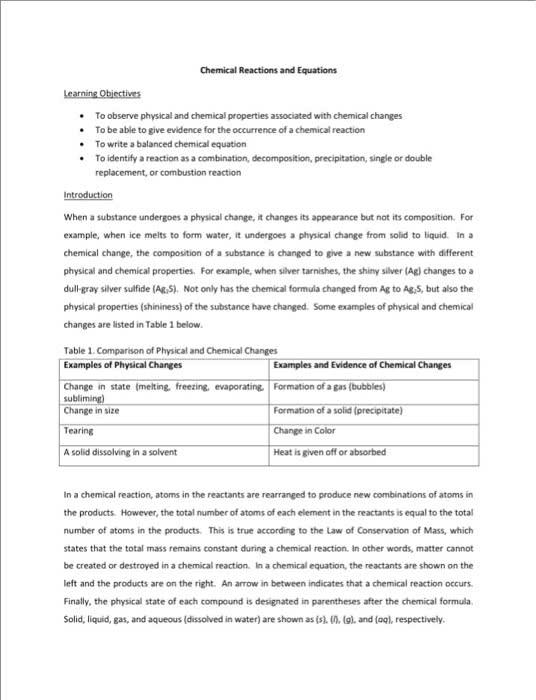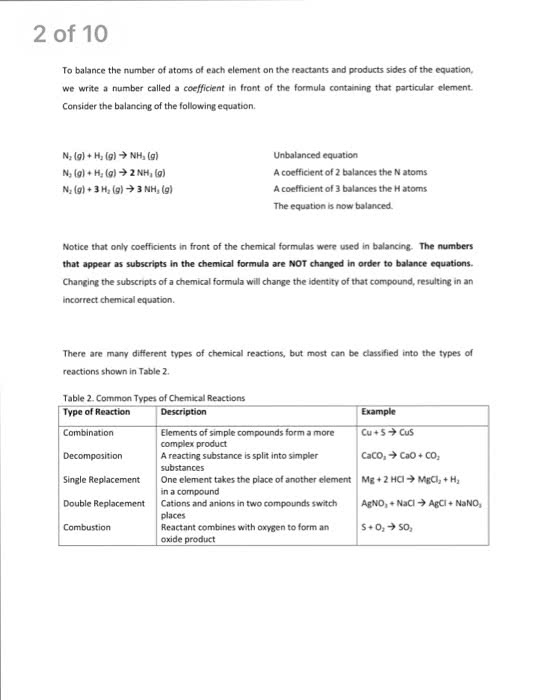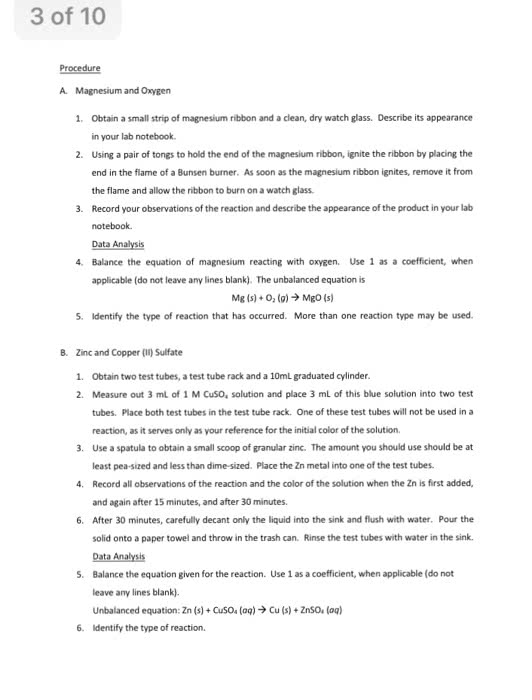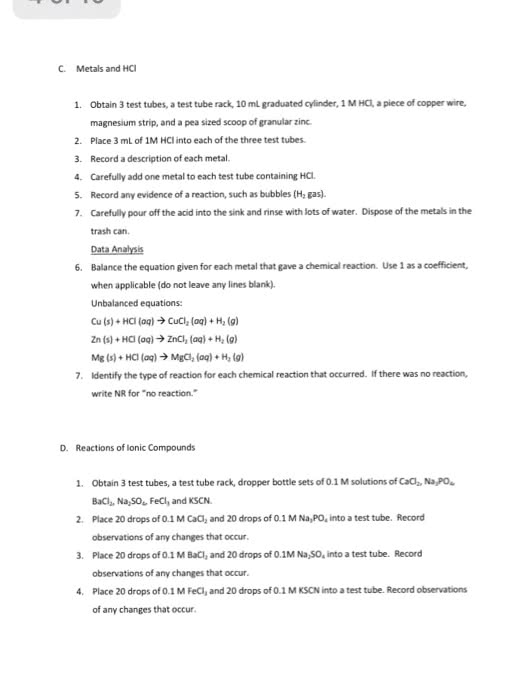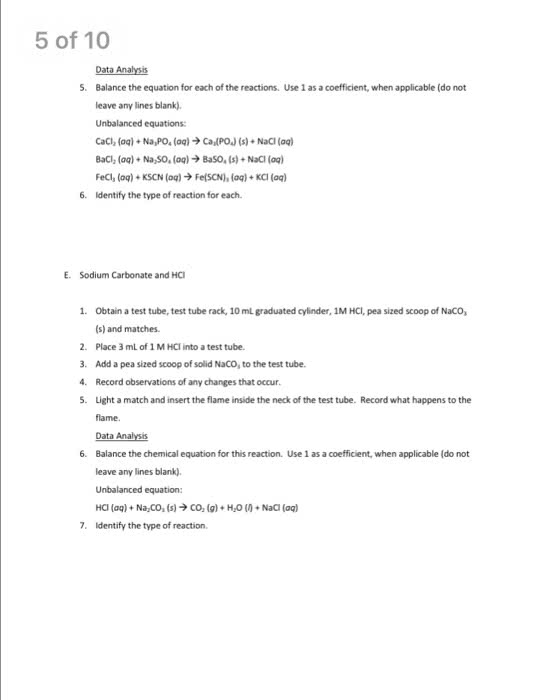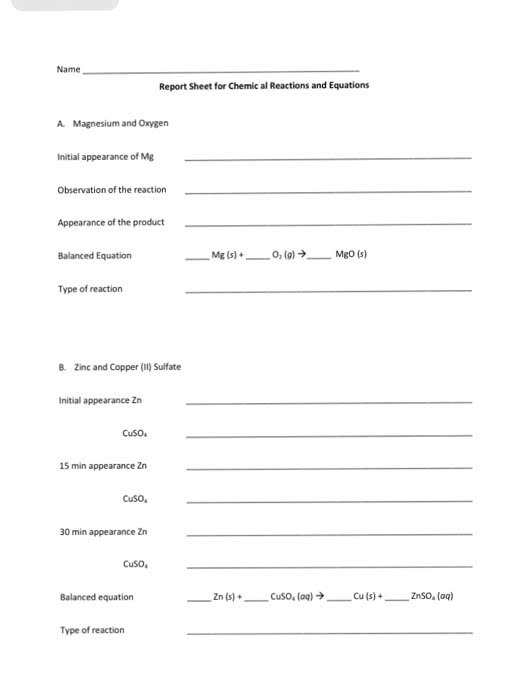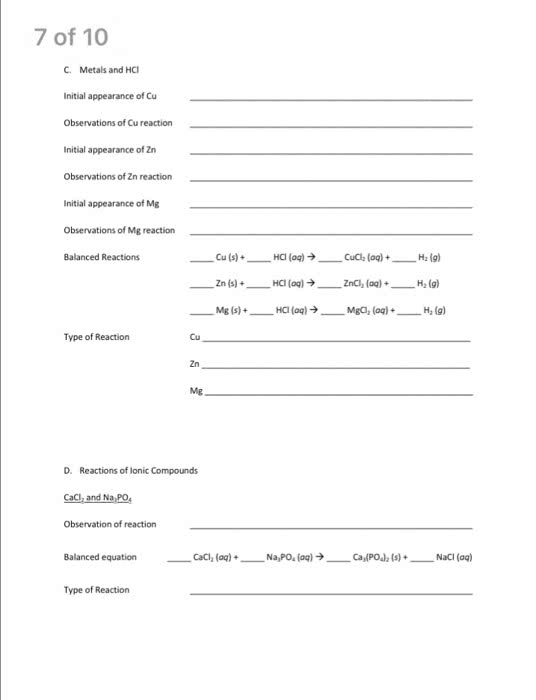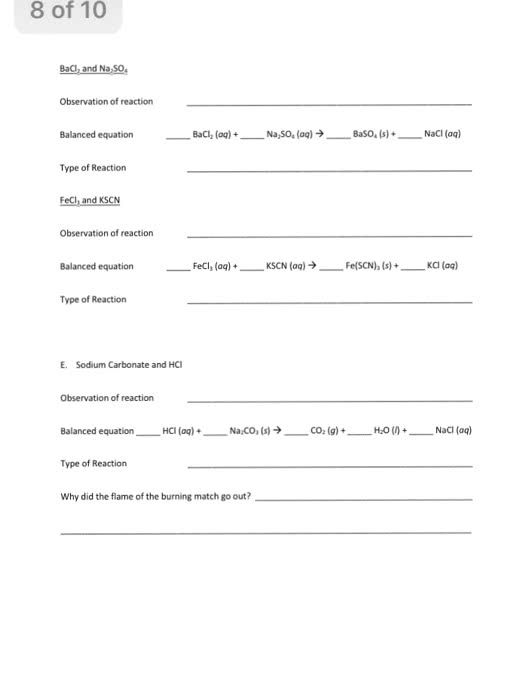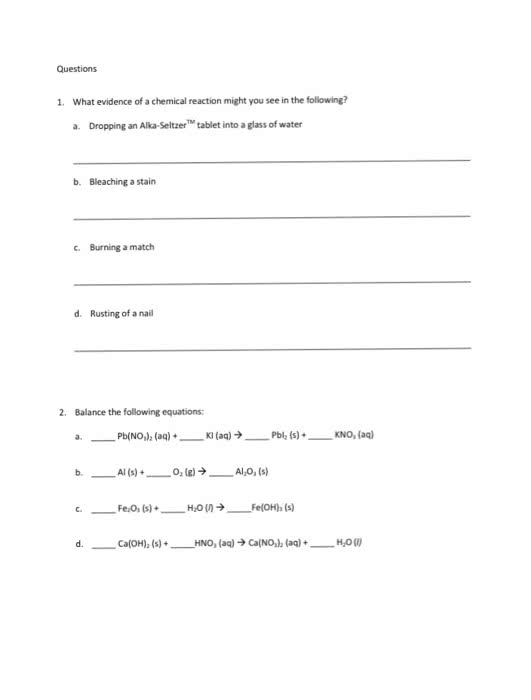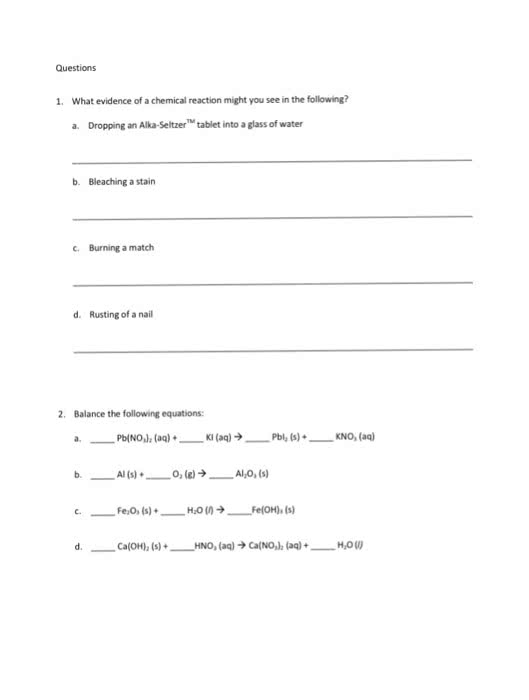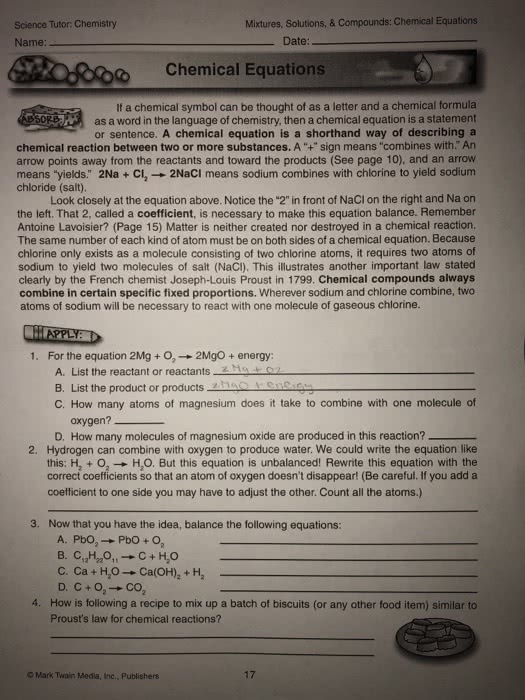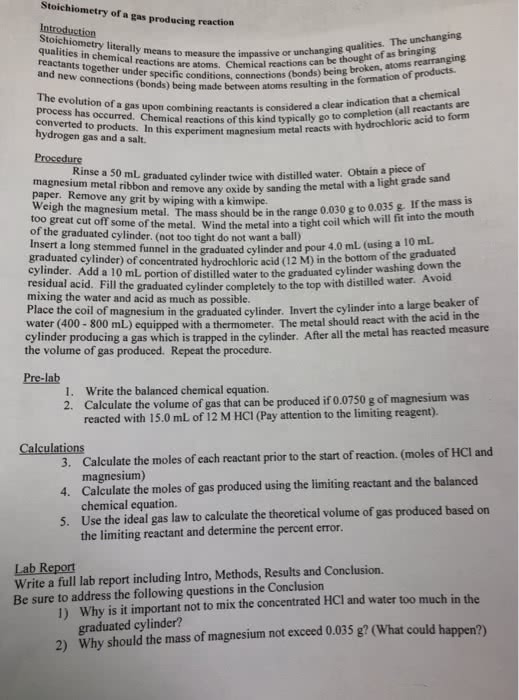CHM211H5 Chapter Notes - Chapter 3.1-3.2: Chemical Equation, Hydrochloric Acid, Sodium Chloride
15 views2 pages
Document Summary
Chemical reaction: events that describe specific changes in substances. (cid:120) signs of a chemical reaction include the following: colour change, formation of a solid, formation of a gas, heat change (release or absorption of energy, production of light. Chemical equations: a short hand method of describing reactions. Reactants: the substances that enter a chemical reaction (being reacted) Products: substances that are the result of a chemical reaction. The law of conservation of mass/matter: a universal law stating that matter cannot be destroyed, nor can it be created in a chemical reaction. Word equation: short hand description of a reaction using the names of the substances. Example: hydrochloric acid + sodium hydroxide (cid:198) sodium chloride + water. Skeletal/chemical equation: description of a reaction using the chemical formulas of the substances. Example: write the chemical equation and balance the following chemical equation. Carbon dioxide and water react with sunlight to produce oxygen gas and glucose.
Get access
Grade+20% off
$8 USD/m$10 USD/m
Billed $96 USD annually

Homework Help
Study Guides
Textbook Solutions
Class Notes
Textbook Notes
Booster Class
40 Verified Answers
Class+
$8 USD/m
Billed $96 USD annually

Homework Help
Study Guides
Textbook Solutions
Class Notes
Textbook Notes
Booster Class
30 Verified Answers
